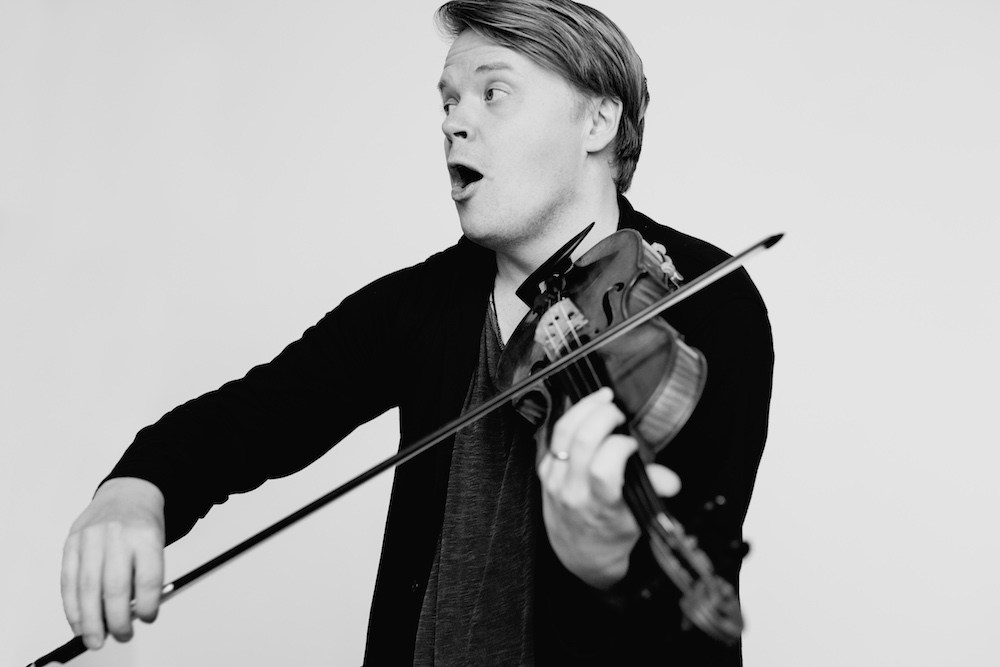The young Finnish violin player and conductor, Pekka Kuusisto, has established an international reputation as a violin player but also as a conductor/director, and in particular as someone who introduces new music to the repertoire. So it is no surprise that we are faced with an unusual concert layout this evening, with a programme whose theme is war and conflict. What is also unusual is that this is very much a concert of two halves.
Now, of course, most concerts are divided in two with an interval, however tonight there is a marked difference in the atmosphere and the music of the two halves. Kuusisto introduces the concert, and tells us that although the programme says the first half will be played without interruption, he encourages us to applaud if we feel like it. Significantly, no one does and the power of the musical choices is enhanced by the silence.
The first half of the concert begins with Bartók’s Soldier’s Song, which like much of his work is derived from traditional folk music. It continues with the work of two great French composers, Ravel and Messian, both very affected by the First and the Second World War. Ravel’s Le Tombeau de Couperin is a tribute to the dead, nominally to the French 18th century composer François Couperin, but is really dedicated to friends he lost in the Great War. This is followed by his sonata for violin and cello, which is dedicated to his friend and fellow composer, Claude Debussy.
Next is perhaps the most profound music to come out of war, Messian’s Quartet for the End of Time. Composed when Messian was a prisoner of war, this is an amazing work, particularly its long clarinet solo, superbly played by the SCO’s Maximiliano Martín.The first half concludes with a modern work by American composer George Crumb, a reflection on the Vietnam War.
After the interval, the theme of war and conflict continues in a very different musical form, beginning with baroque composer Biber, whose Battalia was composed in 1673. The Biber creates an exciting soundscape, which the SCO clearly enjoy playing, stamping their feet and striking their instruments, and they are surrounded by the sounds of drunken soldiers played through loudspeakers. It ends with a lament by the wounded.
The concert concludes with a work born not out of war but out of conflict. This is Haydn’s Farewell Symphony, written in 1772 in protest against against the Emperor of Austria and Hungary, who decided that his musicians, including Haydn, should stay on for a further two months at his summer palace without their families.
The symphony begins conventionally, but on very dark notes, no doubt reflecting Haydn’s mood. However, the “farewell” begins in the final movement, when the musicians begin to leave the stage one by one until only two are left playing. Haydn was clearly telling his employers his feelings: they all wanted to go home! Kuusisto and the orchestra get a warm response from the big Queen’s Hall audience, and he rewards us with a Swedish folk tune on the violin .
